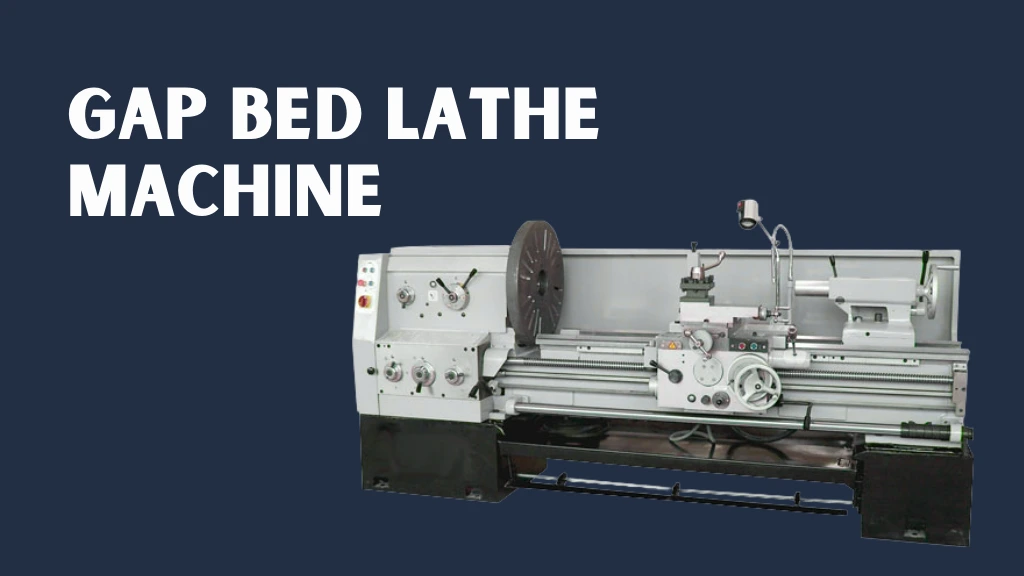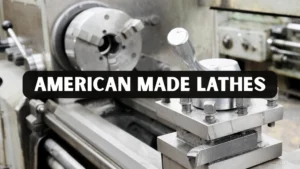In the world of metalworking and machining, versatility and precision are crucial. A gap bed lathe is a specialized machine tool designed to handle workpieces that are too large for standard lathes while maintaining accuracy and stability. For hobbyists, professional machinists, and manufacturing companies alike, understanding the capabilities of this machine can significantly enhance productivity and quality.
These lathes are particularly useful in workshops where space is limited or where operators need the flexibility to handle a wide range of workpiece sizes. Unlike conventional machines, they are engineered to accommodate oversized components without compromising structural integrity or machining accuracy. This makes them a popular choice in industries such as automotive, aerospace, tool and die making, and general manufacturing.
This guide provides a detailed overview of the machine, including its features, advantages, applications, and maintenance practices. By the end, readers will have a thorough understanding of why this type of lathe remains an essential tool in modern workshops.
Key Features of a Gap Bed Lathe
A gap bed lathe stands out from conventional lathes because of its ability to provide both flexibility and precision in machining. Its design allows operators to handle larger and more complex workpieces while maintaining stability and accuracy. Professional machinists often rely on this type of lathe for demanding tasks in workshops and manufacturing plants. Its robust structure ensures reliable performance even under heavy-duty operations, which is essential for maintaining consistent production quality.
One of the most valuable features of this lathe is the removable bed gap located near the headstock. This allows operators to machine components that exceed the normal diameter capacity of standard lathes. By adjusting or removing the gap section, oversized parts can be accommodated without compromising structural integrity. This flexibility also helps workshops with limited space to maximize the utility of a single machine. Experts note that this feature reduces the need for additional lathes, saving both cost and workspace.
Durability and precision are fundamental to the lathe’s performance. The heavy-duty construction, often made of high-quality steel or cast iron, minimizes vibration and enhances stability. Precision-ground bedways and high-accuracy lead screws allow for exact tolerances on complex or large components. This combination of strength and engineering accuracy makes the lathe indispensable in industries like aerospace, automotive, and tool-making. Professionals recognize it as a critical tool for achieving high-quality results in any precision machining application.
Advantages of Using Gap Bed
A gab bed machine with enhanced capabilities provides significant benefits that make it an essential addition to any workshop. One of the primary advantages is the increased workpiece capacity, which allows operators to machine larger diameters that would not fit on standard machines. This expanded capability enables shops to take on a wider range of projects without requiring multiple pieces of equipment. Experts in manufacturing emphasize that this versatility improves workflow efficiency and supports more complex machining tasks.
Cost-effectiveness is a key feature of the gap bed lathe. By combining the functions of several machines into a single unit, it reduces the need for multiple specialized lathes. This consolidation lowers equipment costs and optimizes valuable workshop space. The removable bed gap provides flexibility, allowing operators to handle both large and small components without purchasing additional machinery. Industry professionals recognize this as a practical solution for workshops with varied production demands.
Flexibility and precision further enhance the value of these machines. Operators can quickly adjust the lathe to accommodate different part sizes, reducing downtime and streamlining production. Despite its ability to handle oversized workpieces, it maintains high accuracy through robust construction, precision-ground components, and finely tuned lead screws. This combination ensures consistent, high-quality results while minimizing setup time, ultimately increasing productivity and lowering operational costs.
Applications
Lathe gap beds are highly valued across multiple industries for their versatility and ability to handle large workpieces. In the automotive sector, they are frequently used to machine engine components, shafts, and other critical parts that demand both precision and size accommodation. These machines enable manufacturers to produce high-quality components for cars, trucks, and industrial vehicles while maintaining tight tolerances, which is essential for performance and reliability.
In aerospace manufacturing, these machines play a pivotal role in producing precision parts for aircraft engines, landing gear, and structural components. Maintaining exact tolerances on large or complex parts is vital in this industry, where both safety and efficiency are paramount. Experts highlight that using these lathes ensures consistent quality while reducing the likelihood of costly errors during production.
Tool and die making, along with general manufacturing operations, also benefit significantly from these machines. They are used to fabricate molds, dies, fixtures, and parts for machinery, pumps, and industrial equipment. Workshops that handle metal fabrication often rely on this type of lathe to turn large rods, tubes, and oversized components, providing solutions for tasks that would otherwise require multiple machines. Their adaptability and precision make them indispensable in modern manufacturing environments.
Gap Bed vs Fixed Bed Lathe
When deciding between a gap bed lathe and a fixed bed lathe, several factors need careful consideration. A gap bed machine provides increased workpiece capacity due to its removable bed gap, allowing operators to handle oversized components that standard fixed bed machines cannot accommodate. This capability is particularly useful in workshops managing a wide variety of part sizes and complex machining tasks, offering enhanced operational flexibility without compromising accuracy.
Versatility is another distinguishing factor. The removable Gap Lathe can perform multiple machining operations on parts of different sizes, making it suitable for workshops that frequently switch between project types. In contrast, fixed bed lathes excel in stability and precision, which is essential for high-tolerance applications. However, they lack the adaptability of a gap bed design, limiting their efficiency in environments with diverse machining requirements.
Cost and space considerations also play an important role. Gap bed machines are generally more cost-effective for workshops needing to machine diverse components, as a single machine can replace multiple specialized lathes. Additionally, when the removable bed section is not in use, these machines occupy less floor space, whereas fixed bed lathes may require larger areas to accommodate oversized workpieces. Ultimately, the choice depends on production needs, part sizes, and the balance between flexibility and stability.
Maintenance Tips
Proper maintenance is essential for ensuring the long-term performance and accuracy of a lathe gap bed. Regular cleaning removes metal shavings, dust, and coolant residues that accumulate during machining operations, helping the machine run efficiently and reducing the risk of damage to sensitive components. Experts emphasize that maintaining a clean machine not only prolongs its life but also ensures consistent precision in every task.
Lubrication is another critical aspect of maintenance. Moving parts such as lead screws, gears, and spindle bearings require regular lubrication to minimize friction and wear. Following the manufacturer’s recommended schedule and using high-quality lubricants helps maintain smooth operation, prevents premature component failure, and contributes to overall machine reliability.
Routine inspections and alignment checks are vital to preserving machining accuracy. Misalignment of the headstock, tailstock, or bedways can lead to errors and inconsistencies in the finished workpiece. Periodically checking critical components, including the removable bed gap, spindle bearings, and tailstock, allows operators to identify early signs of wear or damage. Timely adjustments and repairs ensure the lathe continues to perform accurately and efficiently for many years, supporting productivity and reducing costly downtime.
Conclusion
A gap bed lathe is a versatile, precise, and cost-effective machine tool that can handle oversized workpieces without compromising quality. Its removable bed gap, heavy-duty construction, and adaptability make it an essential tool for workshops, manufacturing plants, and industrial operations. Proper maintenance and understanding of the lathe’s capabilities allow operators to maximize productivity and achieve high-quality results consistently.
FAQs
Can a lathe gap bed replace a fixed bed lathe?
Gap bed machines provide greater versatility for handling oversized workpieces, but fixed bed lathes may still be preferable for applications where rigidity and stability are the most critical factors.
Is the removable bed gap feature easy to use?
Modern lathes are designed for convenient removal and reinstallation of the bed section. Following the manufacturer’s guidelines ensures proper alignment and maintains machining accuracy.
Are there any limitations to using a gap bed?
Removing the bed gap can slightly reduce the rigidity of the machine. Operators should verify alignment after reinstallation and avoid machining extremely heavy or unbalanced workpieces without additional support.
What industries benefit most from lathes gap beds?
Industries such as automotive, aerospace, tool and die making, and general manufacturing benefit greatly from the versatility and large workpiece capacity of these lathes.
How can operators ensure precision when using a gap bed machine?
Maintaining precision involves using high-quality cutting tools, performing regular lubrication and alignment checks, and minimizing vibration during operation.




